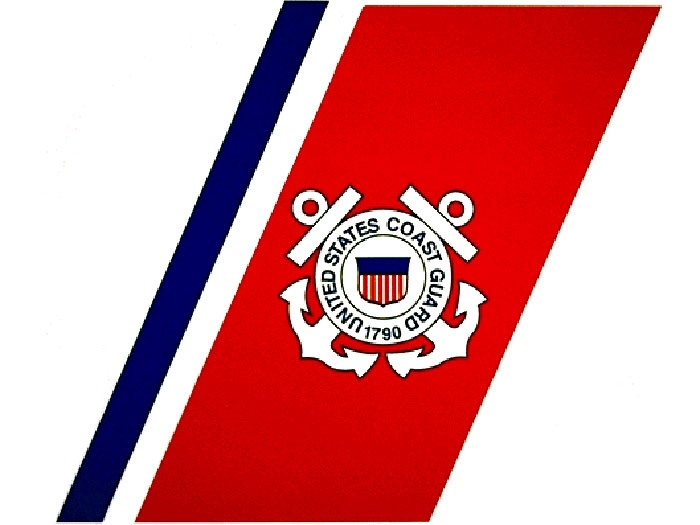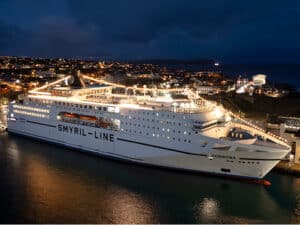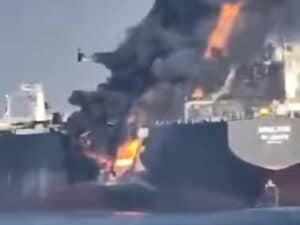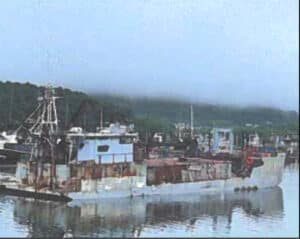
USCG issues another safety alert on fuel spray fires
Written by Nick Blenkey
JUNE 7, 2017 — The U.S. Coast Guard Inspections and Compliance Directorate has issued a safety alert addressing yet another fuel spray fire onboard a commercial vessel, noting that these types of incidents, involving fuel leakages contacting hot surfaces and igniting, happen too frequently and have been a focus of various marine safety organizations such as the IMO for many years.
Following is taken from the alert (Safety Alert 06-17: Fuel Spray Fire – Déjà Vu: Prepare and Prevent it from Happening to You!)
One recent marine casualty involved a 194 GRT inspected offshore supply vessel with an unmanned engine room. This engine room fire led to significant damage, operational down time of the vessel and lost company revenues. Fortunately, no one was injured during this event.
Investigators learned that the master received a main engine low fuel pressure alarm on the bridge which was then investigated by the crew.
The crew member on watch entered the engine room and identified a high pressure fuel leak spraying over and upon the port engine’s turbocharger. He also reported a large quantity of diesel fuel in the bilge. The master then went down into the engine room and witnessed the ignition of the fire. Using a hand held portable fire extinguisher he quickly attempted to extinguish the fire without success. The master activated the general alarm, secured the hatches, had crew members secure the ventilation dampers and closed the remote fuel shut-off valves to the engine room. The fire then quickly self extinguished.
 During the post-casualty inspection of the engine room, the source of the fuel leak was identified to be a rupture on a flexible fuel hose connected to the fuel filter assembly. Additionally, it was noted that the fuel filter assembly and its components were installed in relatively close proximity to the turbocharger on the inboard side of the engine.
During the post-casualty inspection of the engine room, the source of the fuel leak was identified to be a rupture on a flexible fuel hose connected to the fuel filter assembly. Additionally, it was noted that the fuel filter assembly and its components were installed in relatively close proximity to the turbocharger on the inboard side of the engine.
Although components of the turbochargers may be insulated, temperatures on some surfaces typically exceed the fuel’s ignition point. In this instance, the heat radiating from the turbo charger components was very high and likely led to the degradation of the flexible rubberized hoses nearby. However, the installation was confirmed to be in accordance with an accepted location on the manufacturer’s marine engine manual.
Following the casualty, the owner/operator of the vessel enacted fleet-wide changes and relocated the fuel filter assemblies away from the turbochargers on the outboard side of the engines in the vicinity of the fuel pumps.
The U.S. Coast Guard strongly recommends vessel owners and operators to regularly:
- Avoid an “out of sight, out of mind mentality.” Unmanned machinery spaces should be inspected at least daily, but preferably several times per day. Those who perform such activities should develop an eye for detail by tracing out and inspecting all equipment, systems, and components. Such spaces should be well lit as good lighting will benefit mindsets of those within the spaces and enhance the ability to detect anomalies.
- Inspect fuel and lubricating systems closely from source tanks to system end points. Think about system vulnerabilities, loose or missing pipe clamps and securing devices, wear or chaffing due to vibration impacting hoses, and piping or tubing which may be insufficiently secured. Make sure plastic piping is not close to hot spots. Examine fuel supply pumps, noting shaft sealing for leakages and bearings when fitted, for overheating and indications of wear. Pay similar attention to the pumps and motors associated with other systems.
 Regarding hot spots; examine all heat sources particularly with respect to engine exhausts. Look closely at areas where exhaust piping may exit the space and proceed through other spaces. Numerous fires onboard vessels have occurred in these areas. Ensure all insulation, blankets, and lagging are maintained and kept tight. Look for areas where released fluids may make contact. Check that spray shielding is kept in place where used and consider adding such shielding around gasketed flanges and other areas if helpful.
Regarding hot spots; examine all heat sources particularly with respect to engine exhausts. Look closely at areas where exhaust piping may exit the space and proceed through other spaces. Numerous fires onboard vessels have occurred in these areas. Ensure all insulation, blankets, and lagging are maintained and kept tight. Look for areas where released fluids may make contact. Check that spray shielding is kept in place where used and consider adding such shielding around gasketed flanges and other areas if helpful.- Minimize the use of nonmetallic flexible hoses in systems carrying flammable liquids particularly around engine areas where failures leading to leakage or spray may find hot spots capable of igniting the fluids. Consult with engine representatives if modifications are needed to minimize the risk of fuel spray fires.
In this instance the installed engines and components were about three years old. It may be beneficial for vessel owners to consult with engine manufacturer representatives to determine if a replacement schedule is necessary taking into account hose exposure to heat sources, vibration, and other factors that may degrade the hose strength internally or externally.





Leave a Reply
You must be logged in to post a comment.